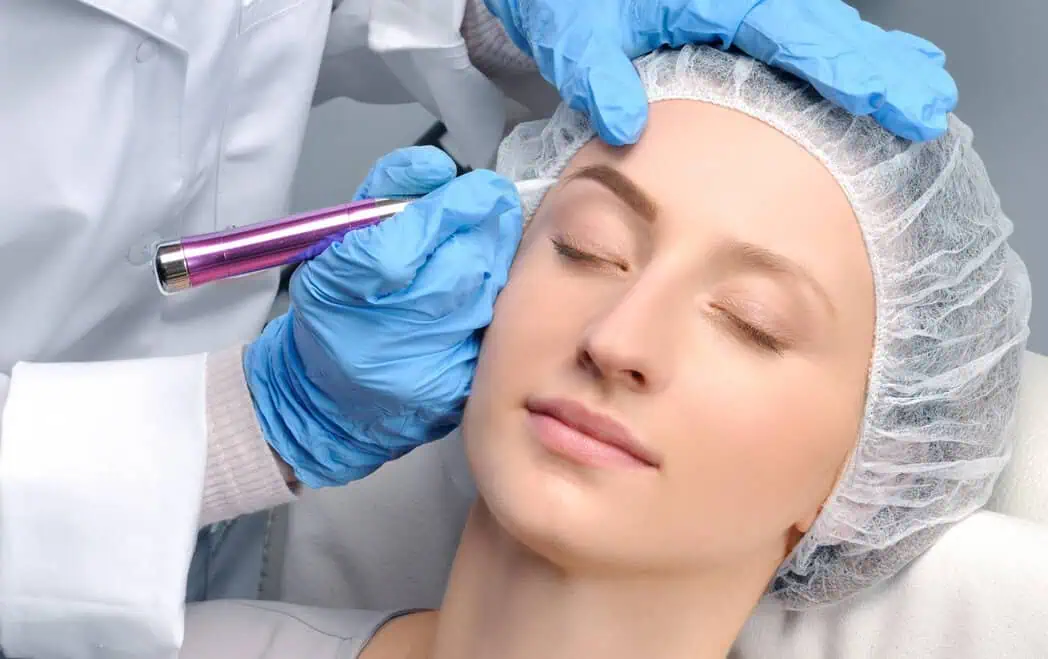Many people are surprised to learn that Botox, a popular cosmetic treatment, is actually a type of neurotoxin. Too often, many have made the comparison between neurotoxin injections vs botox. This revelation often leads to confusion about what exactly a neurotoxin is and how it is used safely in both medical and cosmetic fields. So, we will clarify what Botox is, explore its relationship to other neurotoxins, and introduce additional treatments like Dysport and Daxxify. Knowing the nuances between these options can help you make informed decisions about their uses and effects. We will examine each treatment’s mechanisms, benefits, and why they might be chosen over others.
What are Neurotoxins?
Neurotoxins are substances that disrupt the normal function of the nervous system. In medical and cosmetic contexts, they specifically target nerve signaling processes, altering how nerves communicate with muscles and other cells. This interference can either be detrimental or beneficial, depending on the substance’s use and application.
In medicine, neurotoxins are used to manage a variety of conditions. They can help reduce excessive muscle contractions, alleviate pain, and manage symptoms of disorders such as chronic migraines, muscle spasticity, and even excessive sweating.
Cosmetically, neurotoxins are most famously used to relax facial muscles, which can reduce the appearance of wrinkles and fine lines. The principle behind their use in aesthetics is relatively straightforward: by inhibiting the release of neurotransmitters that cause muscle contractions, the muscles relax, making the skin above them appear smoother and less wrinkled.
Botulinum toxin is the most well-known neurotoxin in both therapeutic and cosmetic contexts, commonly referred to by its product name, Botox. However, several other neurotoxin formulations, such as Dysport and Daxxify, offer similar effects with varying durations and specific applications. Each of these treatments utilizes the fundamental neurotoxic effect of temporarily paralyzing or weakening muscle activity to achieve desired results, whether for improving appearance or enhancing patient comfort in medical treatments.
Botox: A Popular Neurotoxin
Botox, scientifically known as Botulinum toxin type A, is the most widely recognized brand of neurotoxin in the medical and cosmetic fields. Derived from the bacterium Clostridium botulinum, Botox blocks nerve signals that cause muscles to contract. This temporary paralysis of muscle activity makes it effective for therapeutic treatments and aesthetic improvements.
Historically, Botox was first approved for medical use in the late 1980s to treat strabismus (crossed eyes) and blepharospasm (uncontrollable blinking). Its cosmetic potential was discovered somewhat serendipitously when doctors observed that wrinkles around the eyes softened as a side effect of treating eye-related disorders. This led to its FDA approval in 2002 for cosmetic use, specifically to treat frown lines between the eyebrows.
Botox is primarily used to reduce the appearance of facial wrinkles, particularly in the upper face. These include forehead lines, crow’s feet (around the eyes), and glabellar lines (between the eyebrows). The treatment involves injecting small doses of Botox directly into the facial muscles responsible for these wrinkles, resulting in a smoother, more youthful appearance.
Other Neurotoxin Treatments
While Botox is the most famous and widely used neurotoxin treatment, other significant players in the market, such as Dysport and Daxxify, each have unique characteristics and advantages. These alternatives provide patients with more options, allowing them to choose a treatment that best suits their needs and expectations.
Dysport
Dysport, like Botox, is derived from Botulinum toxin type A. It was approved in the United States in 2009, primarily treating glabellar lines and the frown lines between the eyebrows. Dysport tends to have a slightly quicker onset than Botox, often showing effects within 1-2 days after treatment, compared to Botox’s 3-5 days. This can be particularly appealing for patients seeking more immediate results.
Dysport is also noted for its “spreading” quality, which can be advantageous in treating larger areas that require a more diffuse effect. This characteristic makes it suitable for areas like the forehead, where a more even distribution of the neurotoxin can lead to a more natural-looking reduction of wrinkles. However, this same quality requires a skilled hand to administer, as it could potentially lead to unintended spreading to adjacent muscles.
Daxxify
Daxxify is the newest addition to the neurotoxin treatment market, approved by the FDA in 2022. It’s distinct from Botox and Dysport in both its formulation and longevity. In clinical trials, Daxxify has been shown to last significantly longer than its counterparts—up to six months in some cases, compared to the typical 3-4 months for Botox and Dysport.
The active ingredient in Daxxify is also a botulinum toxin, but it is formulated with a unique stabilizing peptide technology. This extends the duration of its effect and may contribute to its stability without the need for human or animal byproducts, which can be important for certain patients’ ethical or medical concerns.
Choosing The Right Neurotoxin Treatment: Neurotoxin vs Botox
Several factors must be considered when selecting the right neurotoxin treatment to ensure that the chosen product aligns with the patient’s expectations and treatment goals.
Factors to Consider
- Treatment Area: Different neurotoxins may work better for specific areas of the face due to their properties.
- Botox: Ideal for frown lines, crow’s feet, and forehead lines.
- Dysport: Better for larger areas needing a more diffuse effect due to its ability to spread.
- Daxxify: Suitable for patients seeking longer-lasting results in typical Botox application areas.
- Desired Onset of Action: How quickly results are needed can influence the choice.
- Botox: Takes effect typically within 3-5 days.
- Dysport: Effects can appear within 1-2 days, making it a good option for immediate needs.
- Daxxify: Similar onset to Botox, but with longer-lasting effects.
- Duration of Effect: Depending on how long the patient wants the results to last.
- Botox and Dysport: Last about 3-4 months.
- Daxxify: Can last up to 6 months, reducing the frequency of treatments.
- Previous Experiences: Patient history with neurotoxin treatments can guide future choices.
- Some patients may respond better to one product over another based on past treatments.
- Cost and Budget: Treatment costs can vary, and some products may offer more value based on the required frequency of treatments.
- Daxxify, while potentially more expensive per session, might offer better value over time due to its longevity.
- Practitioner Expertise: Some practitioners may have more experience or preference for using a particular neurotoxin.
Takeaway
Ready to explore your options with neurotoxin treatments? At Euna Aesthetics, our providers will help you achieve your aesthetic goals with precision and care. Whether you’re considering Botox, Dysport, or the new Daxxify, we offer personalized consultations to discuss your needs and preferences. Contact Euna Aesthetics today to schedule your appointment and take the first step towards a fresher, more youthful appearance. Let us help you feel your best!







